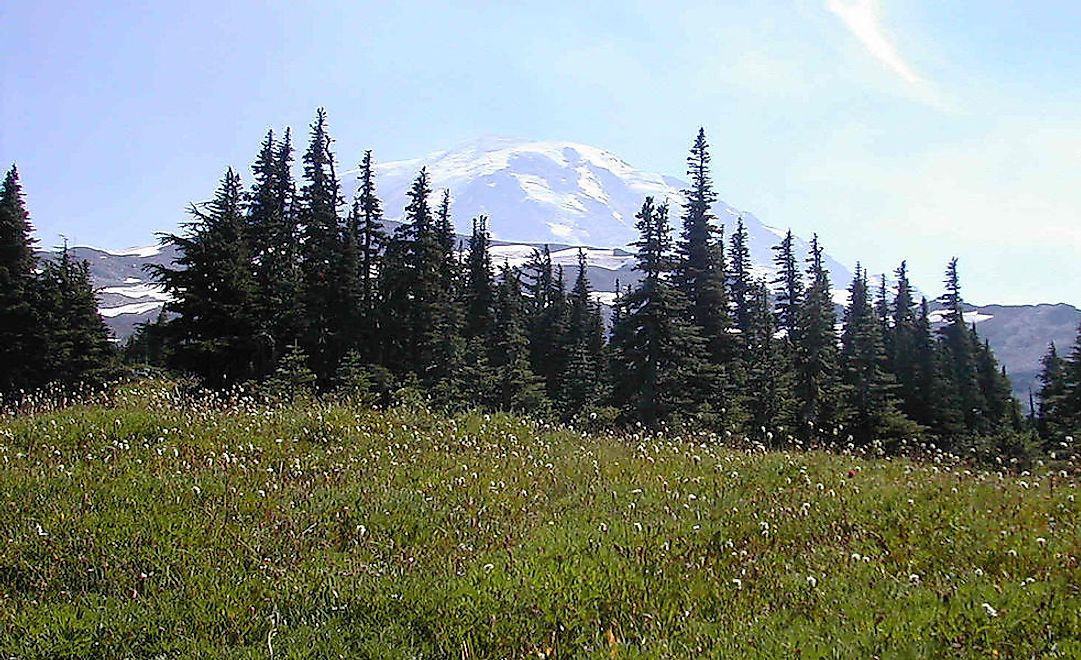What Is A Tree Line?

Trees are some of the most resilient plants in the biosphere and are capable of colonizing almost all terrestrial habitats with even the harshest of conditions. However, trees are living things and have critical conditions necessary for their survival, and when tree growth reaches areas deficient of such conditions, their growth reduces gradually until it ceases altogether. The stretch where this transition happens when viewed from a distance seems to be a clear boundary is known as a tree line. However, when viewed on the site, the transition is gradual with the vegetation cover receding and trees becoming shorter and far in between. The tree line is evident in locations where the elements of temperature, soil type, topography, precipitation, snow, altitude, and the wind have a profound effect on the environment. Tree lines are classified according to the locations where they are found.
Alpine Tree Line
Alpine tree lines are found at extreme altitudes beyond which trees cannot survive and is usually found on mountains. The climate found beyond the alpine tree line is known as the alpine climate with terrain called alpine tundra. There are two main factors that inhibit the growth of trees beyond the alpine tree line: the decreasing air temperature (which can be about 2 degrees per 1,000 feet of elevation) and the presence of snow and ice which affects the biological functions of trees. The altitude where the alpine tree line is present varies in mountains depending on their proximity to the poles. The further a mountain is from the poles, the higher the altitude the tree line begins and vice versa. The alpine tree line is not a clear-cut boundary as seen from a distance and one will find sparse tree growth in scattered areas of the tundra terrain. Alpine tree line can also be evident in leeward facing slopes of mountains which have minimal rainfall. The decreasing precipitation levels create conditions that are not favorable for tree growth, and a tree line can be seen in such an area.
Desert Tree Line
Deserts present some of the harshest conditions for any plant to grow which include extreme temperatures, low to zero precipitation, and dust storms. The tree line in desert landscapes are not clear, and tree growth will decline gradually before finally turning into shrubs and bushes. Desert tree lines occur at low altitudes of about 5,000 feet above sea level.
Human Activity And Tree Lines
Several studies have linked human activity to the occurrence of tree lines in numerous locations all over the world. Pollution is the biggest artificial factor that limits tree growths and therefore causing tree lines. The Kola Peninsula tree line in Russia is a perfect example and is linked to the presence of the nearby copper smelter which is one of the largest in Russia and is responsible for emissions of many pollutants majority of which contaminate the neighboring forests, inhibiting the growth of trees. Deforestation is another artificial cause of tree lines where vast tracts of forests are cleared for the human activity which cuts off the growth of trees in such areas.











